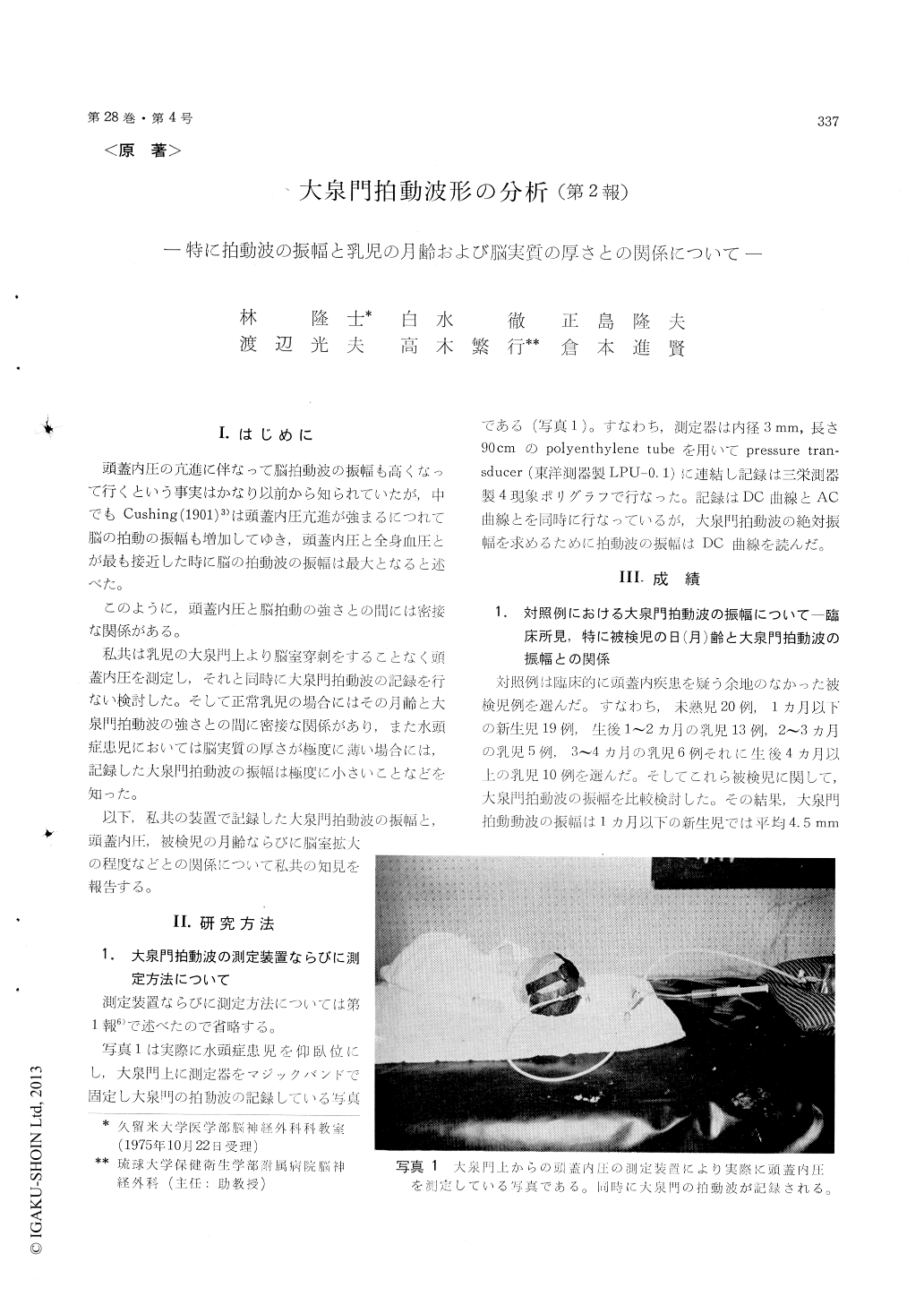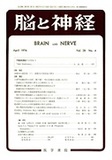Japanese
English
- 有料閲覧
- Abstract 文献概要
- 1ページ目 Look Inside
I.はじめに
頭蓋内圧の亢進に伴なって脳拍動波の振幅も高くなって行くという事実はかなり以前から知られていたが,中でもCushing (1901)3)は頭蓋内圧亢進が強まるにつれて脳の拍動の振幅も増加してゆき,頭蓋内圧と全身血圧とが最も接近した時に脳の拍動波の振幅は最大となると述べた。
このように,頭蓋内圧と脳拍動の強さとの間には密接な関係がある。
The amplitude of "the cerebral pulsatory waves" increases with the enhancement of intracranial pressure. This fact has been known since a con-siderably long time ago. Of the previous authors, Cushing (1901) mentioned that the pulsatory move-ments of the brain increased in amplitude with the enhancement of intracranial pressure, and that the amplitude of the pulsatory waves of the brain reached a maximum when intracranial pressure became the closest to the diastolic blood pressure.
As mentioned above, there is an intimate relation-ship between the amplitude of the cerebral pulsatory movements and intracranial pressure.
The authors measured intracranial pressure via anterior fontanelle, without performing ventricullarpuncture in infants. At the same time authors recorded "the anterior fontanelle pulse wave". As a results, authors found that there was a close relationship between age and amplitude of "the anterior fontanelle pulse wave" were got higher with the advance in age of the infants studied.
Moreover, there was a close relationship between intracranial pressure and the amplitude of "the anterior fontanelle pulse wave". In the same patient, the amplitude of the anterior fontanelle pulse wave became high and low when intracranial pressure had intreased and decreased, respectively. In a patient affected with an extreme enlargement of the ventricles, the amplitude of the anterior fontanelle pulse wave was low, regardless of age and intracranial pressure of the patient.

Copyright © 1976, Igaku-Shoin Ltd. All rights reserved.


